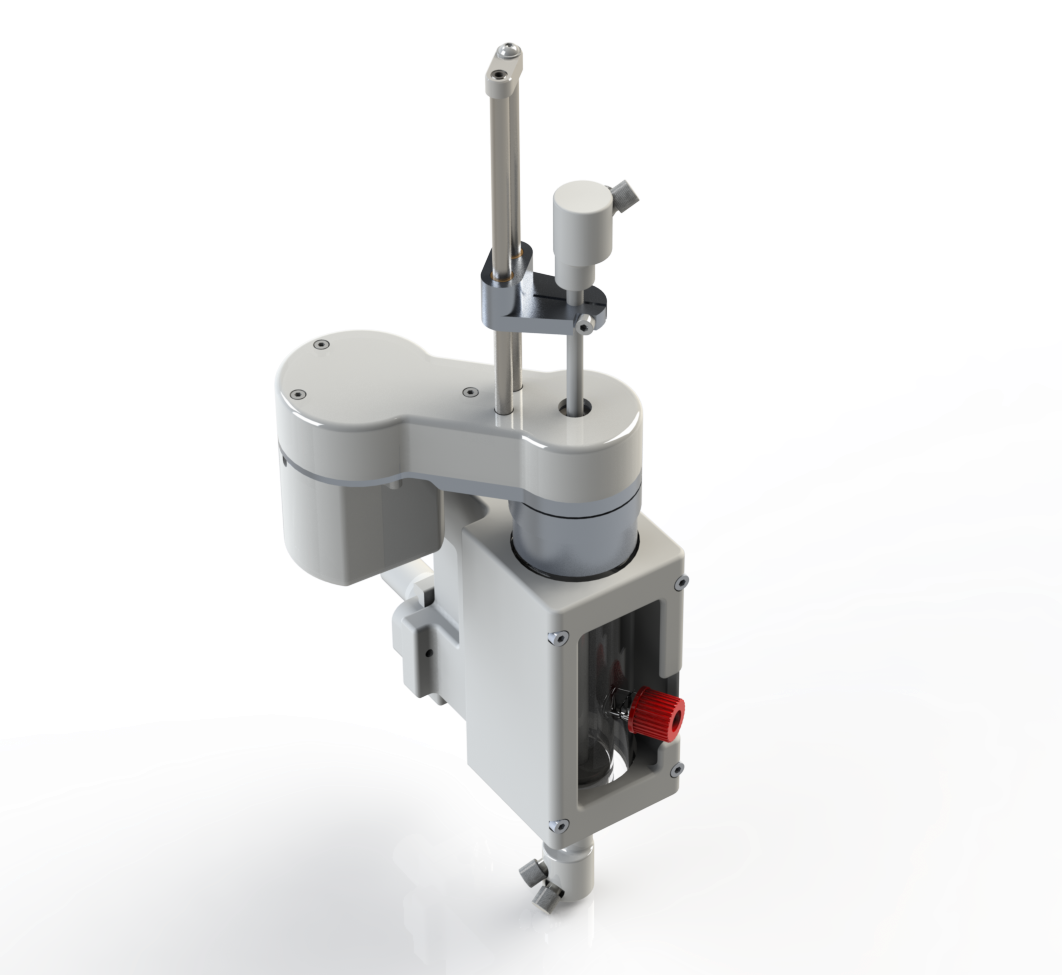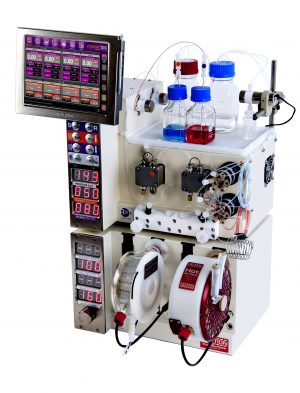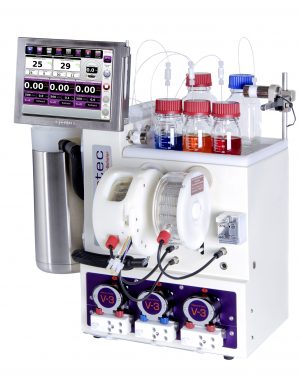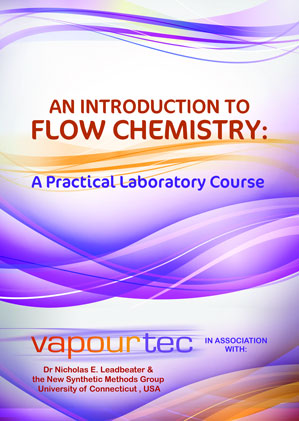
Here we present our latest application note, “Application note 72 – Cleaving peptides in flow”. In this work, we report a continuous flow protocol that enables the cleavage of peptides typically in just under 40 minutes. The key to success was to keep the resin consistently packed, preventing channeling and dilution of the cleavage cocktail. This could only be achieved by using the Variable Bed Flow Reactor (VBFR).
To the best of our knowledge, we report for the first time a continuous flow protocol that enables you to cleave the peptide from the resin, as well as remove all its side protective groups, regardless of the sequence.
Cleavage of peptides after Fmoc synthesis
Solid-phase peptide synthesis (SPPS) often poses two challenges: synthesising the peptide with high purity without using a great excess of reagent, and its removal and isolation from the solid support.
There has been extensive research on improving coupling and deprotection steps. Over the past decades, new reagents and types of resins have been developed. The implementation of flow chemistry brought SPPS to a whole new level, by seamlessly integrating analytical techniques, push reaction kinetics harder and maintain constant packing density [1], [2].
Unfortunately, cleaving the peptide from the resin is still done by traditional batch methods, which require manual handling of TFA. After the synthesis, the resin needs to be washed with DCM to remove any trace of DMF. Then, the cleavage cocktail (TFA with a small percentage of scavengers) is added to the resin and stir for 2-4 hours. Once completed, the resin is filtered off, and the solution is dropped in cold ether to precipitate the peptide.
When working with porous matrixes, such as resin beads in batch, efficient mixing of reagents is challenging, requiring of longer reaction times, and yielding far less reliable results.
Variable Bed Flow Reactor, the solution for heterogeneous chemistry
Vapourtec addressed the main challenge of CF-SPPS by designing and developing the VBFR, which could accommodate volume changes whilst maintaining constant packing density. This key feature has been exploited in solid-phase synthesis [1], [3] and generation of Grignard reagents on demand [4].
As resins swell differently in TFA compared to other solvents, it is necessary to control the packing density of the reactor as the solution media changes. The VBFR maintains a constant packing density of the resin, helping to prevent channeling of reagents, and giving much improved yield and peptide purity.
In this application note, different reaction parameters were evaluated in the cleavage of Glucagon-like peptide-1 (GLP-1). Dr Manuel Nuño commented “We have done extensive work improving CF-SPPS at Vapourtec, reducing cycle times and solvent
usage. Now, with a cycle time of 10 minutes, we can synthesise a 30-mer like GLP-1 with excellent purity in just under 5 hours [2].
Cleavage of the peptide has always been the bottleneck in our process, taking as much time as the actual synthesis and, often, having to re-cleave the resin to ensure the validity of the results.
In addition to these technical limitations, neat TFA is one of the worst reagents to handle. It fumes and is corrosive, which can affect the respiratory tract and cause chemical burns in the skin. By minimising the manual tasks, we can make this process much safer, no more filtering of resin and decanting TFA.
We have developed a continuous flow protocol that reliably cleaves peptides in under 40 minutes with minimal user interaction. To cleave in flow, we simply connect a reagent bottle containing an appropriate cleavage cocktail to the robust pump module The system will run the reaction and the cleaved peptide typically will be collected in a pot with cold ether.
Click here to read the application note
Click here to find out more about the VBFR
Click here to discover more about Vapourtec work in peptide synthesis
Literature
[1] E. T. Sletten, M. Nuño, D. Guthrie, and P. H. Seeberger, “Real-time monitoring of solid-phase peptide synthesis using a variable bed flow reactor,” Chem. Commun., 2019, doi: 10.1039/C9CC08421E.
[2] Vapourtec Ltd, “Application Note 69 – Automated CF-SPPS and evaluation of GLP-1 peptide,” 2021.
[3] E. T. Sletten, J. Danglad-Flores, M. Nuño, D. Guthrie, and P. H. Seeberger, “Automated Glycan Assembly in a Variable-Bed Flow Reactor Provides Insights into Oligosaccharide–Resin Interactions,” Org. Lett., May 2020, doi: 10.1021/acs.orglett.0c01264.
[4] Vapourtec Ltd, “Application Note 67: Generation of Grignard reagents on demand,” 2019.



